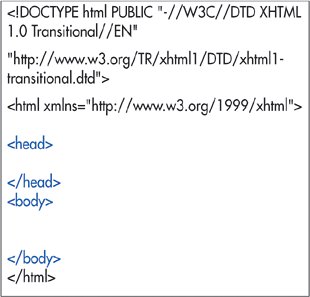Creating the Foundation
| Most Web pages are divided into two sections: the head and the body. The head section is where you define the title of your page, include information about your page for search engines like Google, set the location of your page, add style sheets, and write scripts. Except for the title (see page 60), the content of the head section is not readily visible to the visitor. To create the head section:
The body of your (X)HTML document encloses the content of your Web page, that is, the part that your visitors will see, including the text and graphics. To create the body:
Figure 3.3. The head and body elements help you structure your (X)HTML documents.
|
EAN: 2147483647
Pages: 340

 Tips
Tips